March 11, 2022
This week, the yard gifted me with two birds holding exotic, neotropical credentials. The first, a rare and singular appearance of a male vermilion flycatcher. For an hour, it snapped up insects hidden in the brittle grass. Then it was gone—only the third such observation in 12 years, and if I hadn’t been paying attention that morning—noticing a fiery smudge in a sun-blazed and leafless walnut tree—I would have missed it.
The next gift, on the following morning, began with an eruption of dove wings. But the bird that crossed in front of me looked different. Larger. Paler than the gray white-winged doves and lacking the flashing beacon in flight. Band-tailed pigeon? I hadn’t seen any since last October, and those were the first since 2012. Band-tailed pigeon would make the Rare Bird Alert.
A half hour later, a second eruption drew my attention to the powerline where the astounding rarity alighted and stared over its shoulder in my direction as if granting permission for a photograph.
Backyard birdwatching is not about “watching” so much as observing in the broadest sense. As Sherlock Holmes says to Dr. Watson in “A Scandal in Bohemia”: “You see, but you do not observe.” It’s about opening the door of your mind and stepping out into the world with all your senses engaged, being present in body and mind.
This is mindfulness as artform. To be mindful is to be aware. To perceive your surroundings not just to see them. To use the ears, nose, tongue, and skin as well as the eyes.
Our visual cortex is already hardwired for motion—a key to survival that harkens back to a time when humans were prey to anything with sharp canines. The ability has its roots in the crucial fight or flight response. When something moves, we notice, because any potential threat is something to pay close attention to.
So, the eyes are a good place to begin observing. Don’t dismiss what catches the eye, even the smallest movement. Like the shift of a blade of grass. Or the flick of a thrush wing. Then add the other senses. The squeaky hinges of mourning dove wings. The upcurled whistle of a phainopepla like an audible question mark. What else do you perceive? The green scent of pooled water. Frosted air drawn through the nose and into the lungs. Sunlight, warm against the skin, that sets feathers aflame.
I start with yoga and birds. After I clear the morning chores—filling the pond and feeding the cats, the chickens and rabbit, the frogs and the wife (and, today, replacing the battery in her car)—I brew a cup of strong coffee or tea. Standing in front of the fountain, I work through a series of poses: the sparrow, the roadrunner, the feeding avocet, the one-legged sandhill crane, the window-strike hermit thrush, the drinking-the-frozen-nectar hummingbird. At least that’s what I call them.
Then I give myself permission to be still. For an hour. While I reach into world.
Birdwatching, like yoga, is a practice not a study. You don’t need to know any names—that comes later. You just need to observe them, to learn to see their differences. Western bluebird or buffy-breasted pushover? Who cares?
Make up your own names.
Today, something special. I hear change with the sound of twinkling flutes. Now it begins—the season of jelly and oranges, which I hurry to slice and serve up on the backyard fence. In no time he appears. Another neotropical migrant. The first agave oriole of the year.
Thanks for subscribing and supporting the Big Yard!
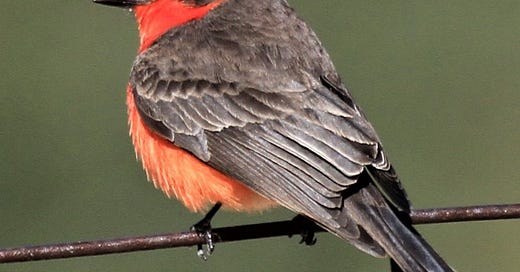



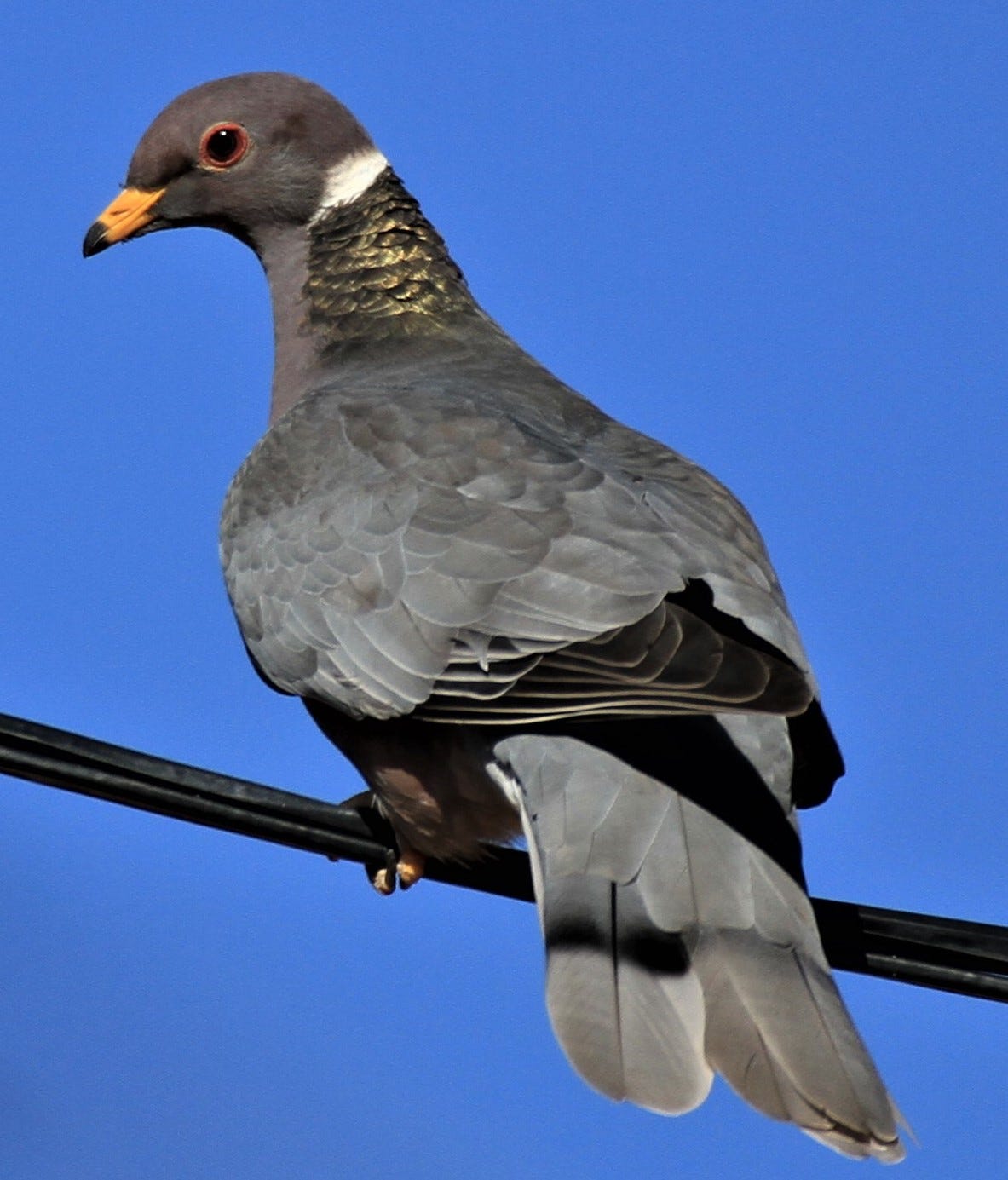
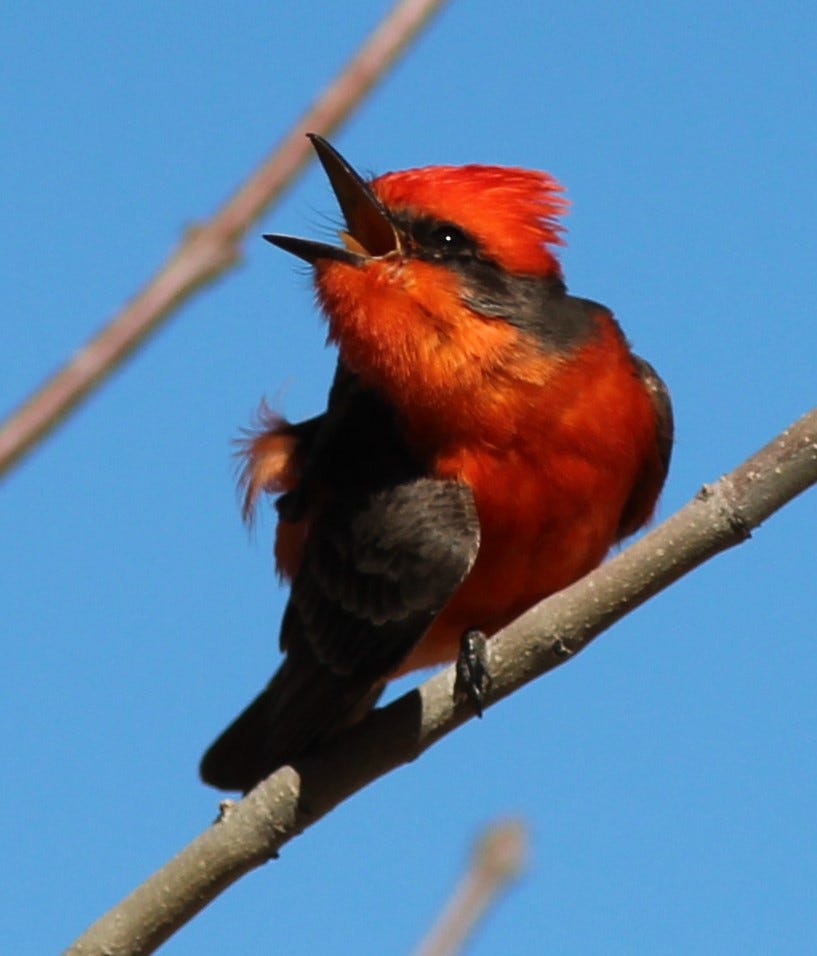
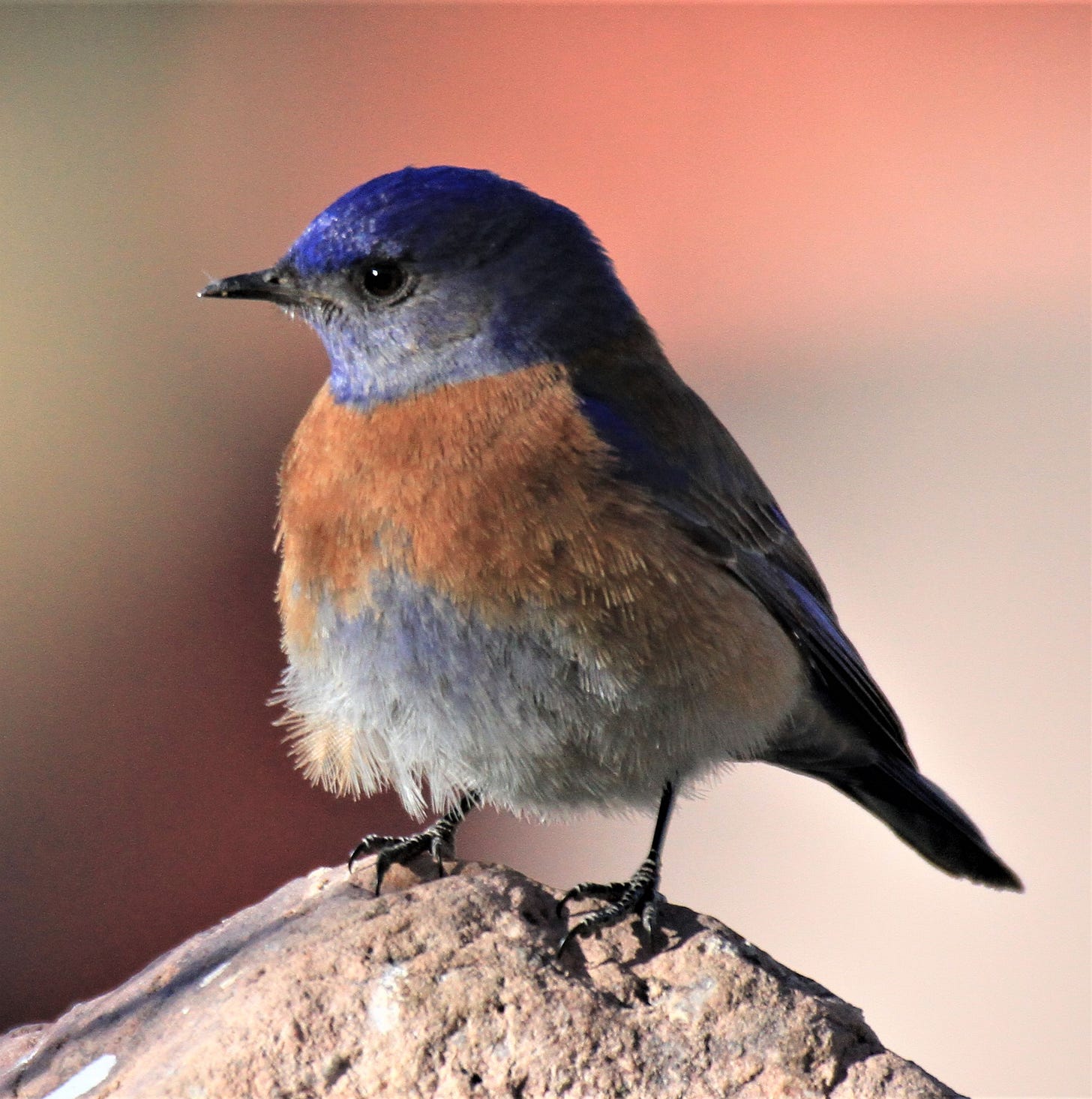
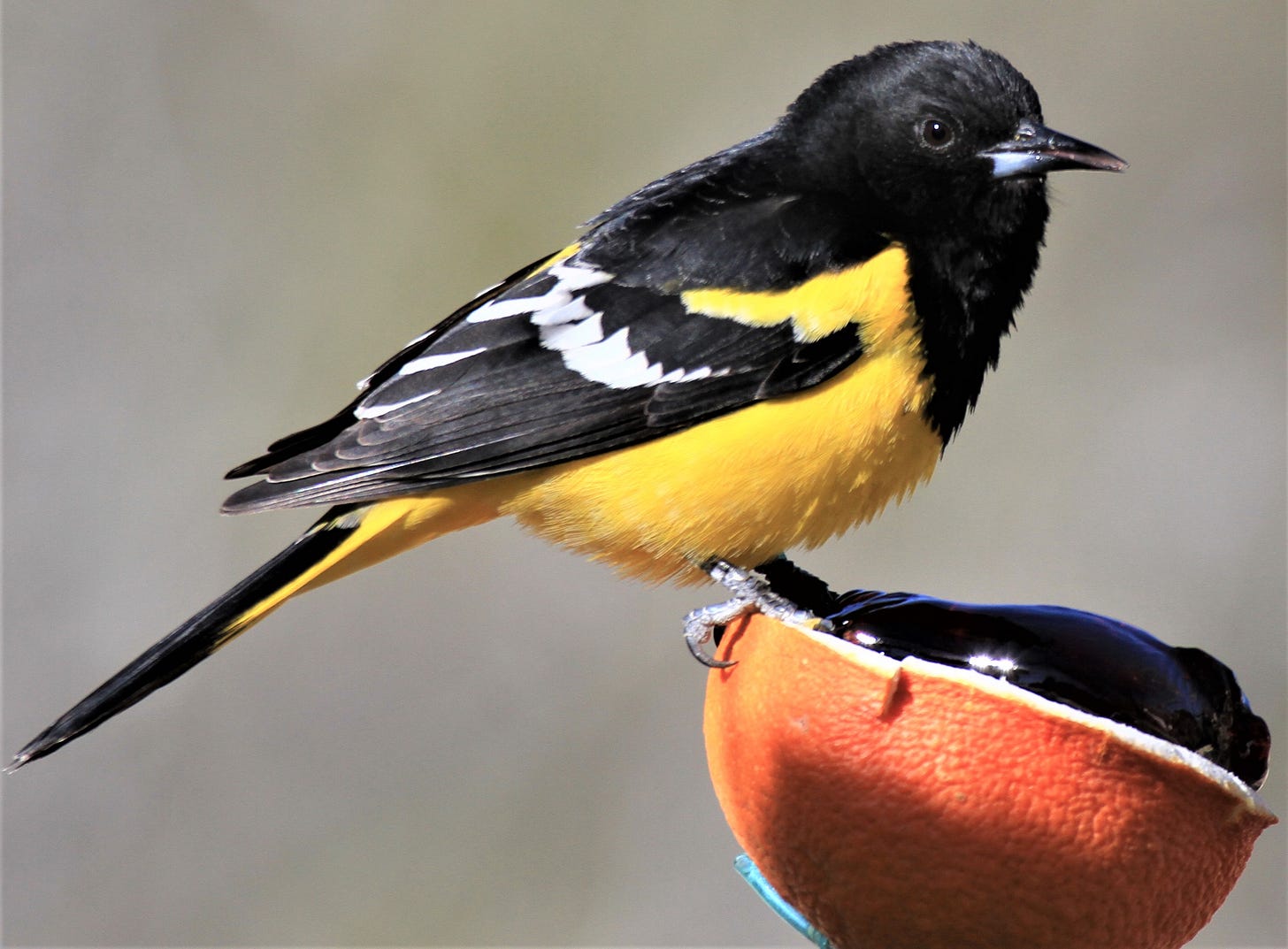
Beautiful in prose and photos!